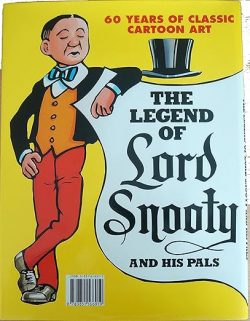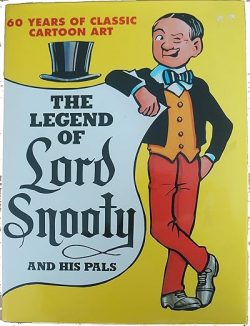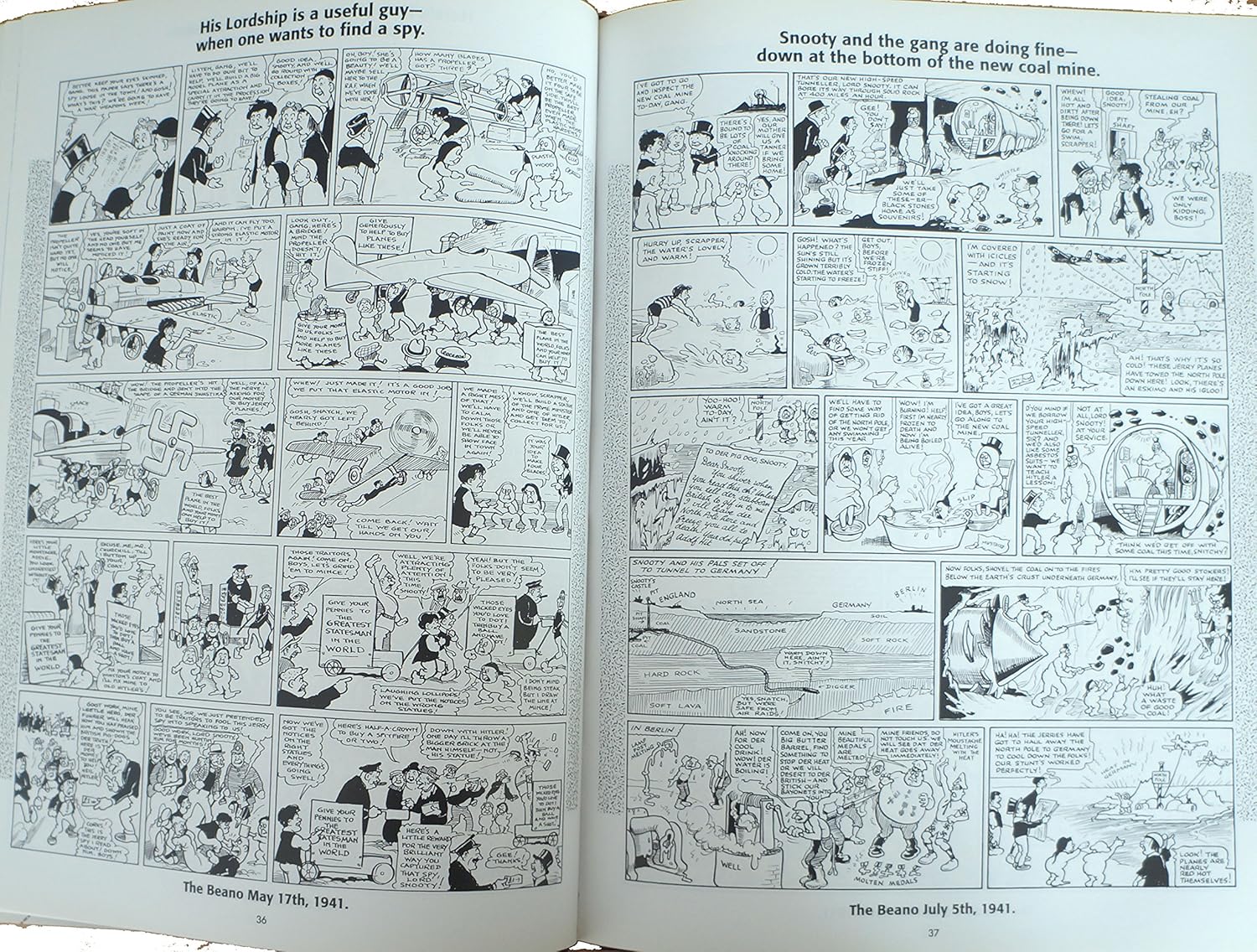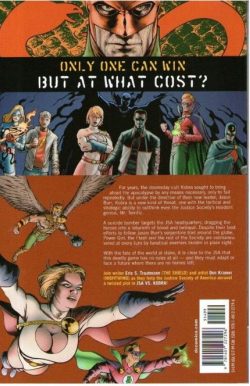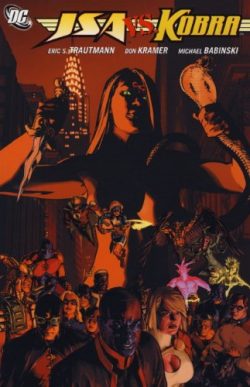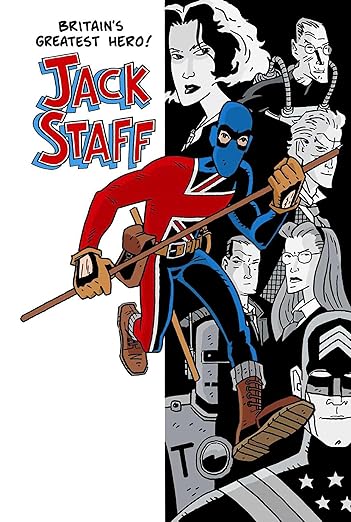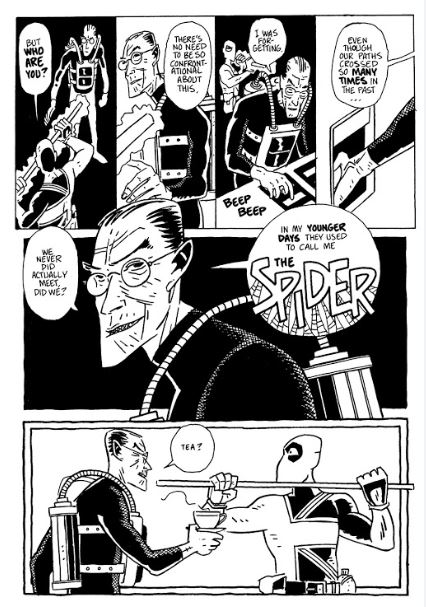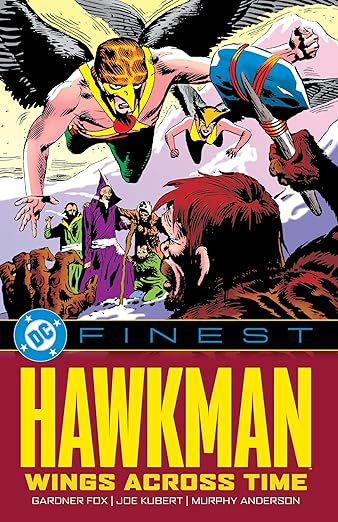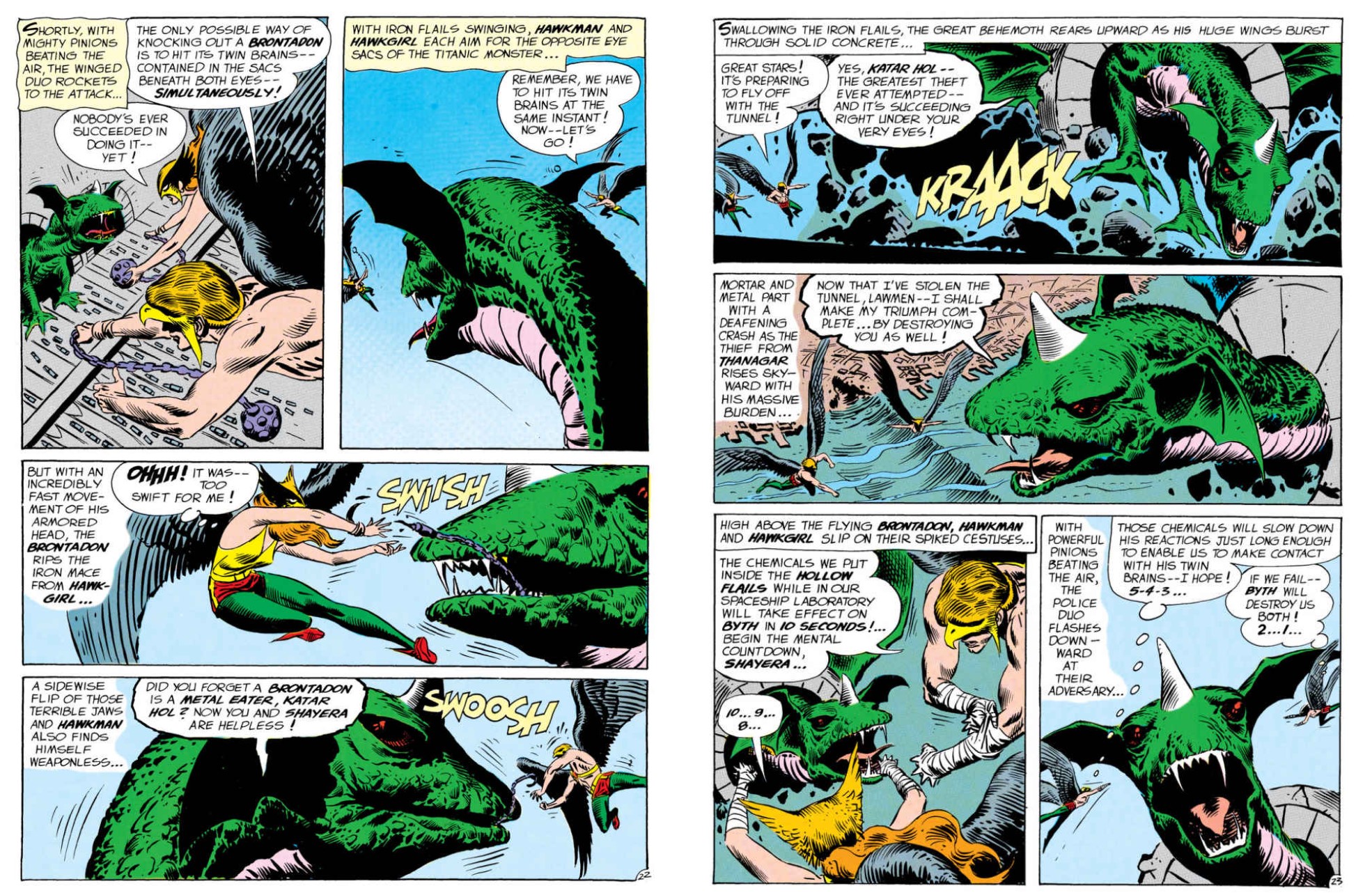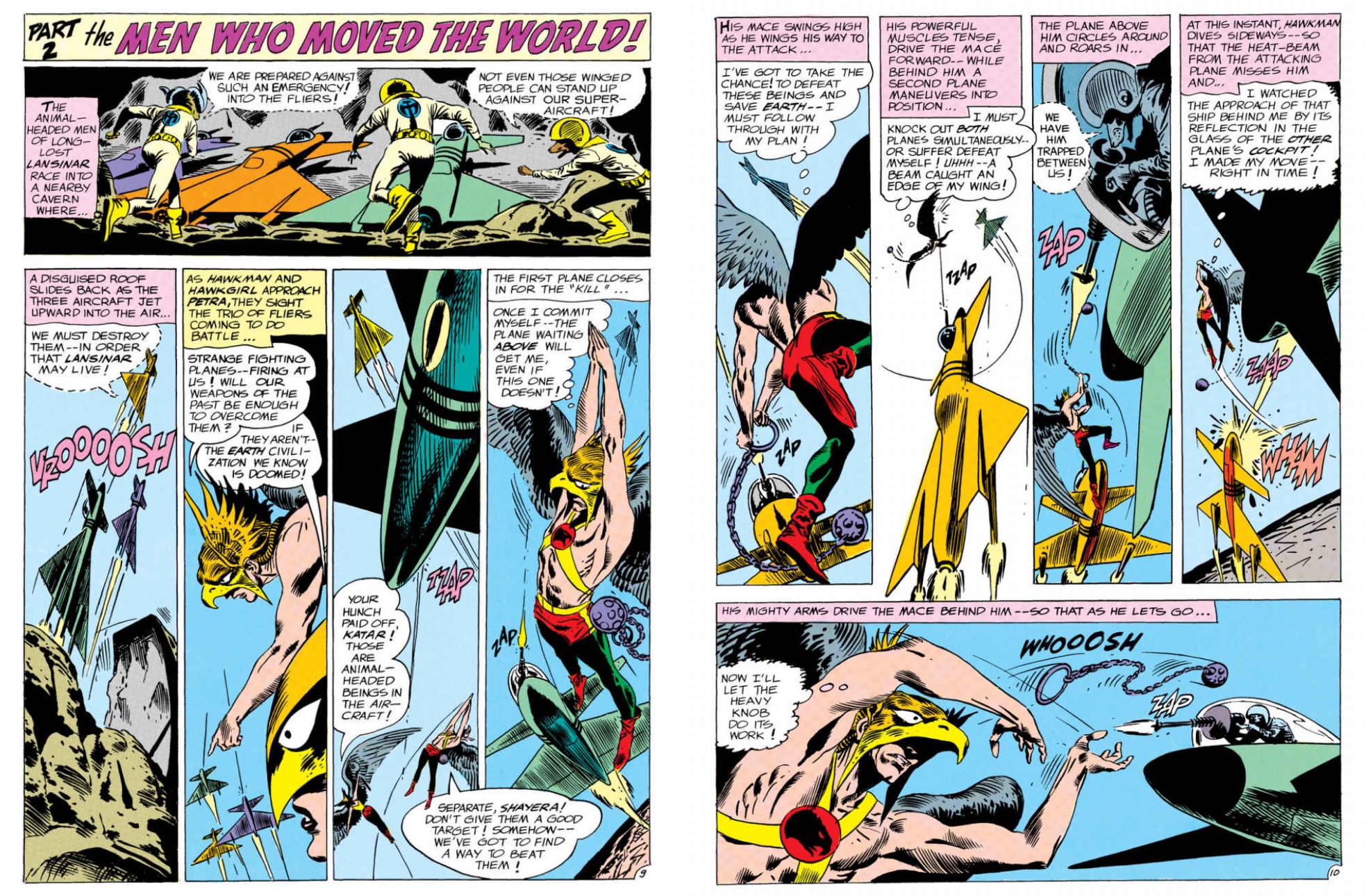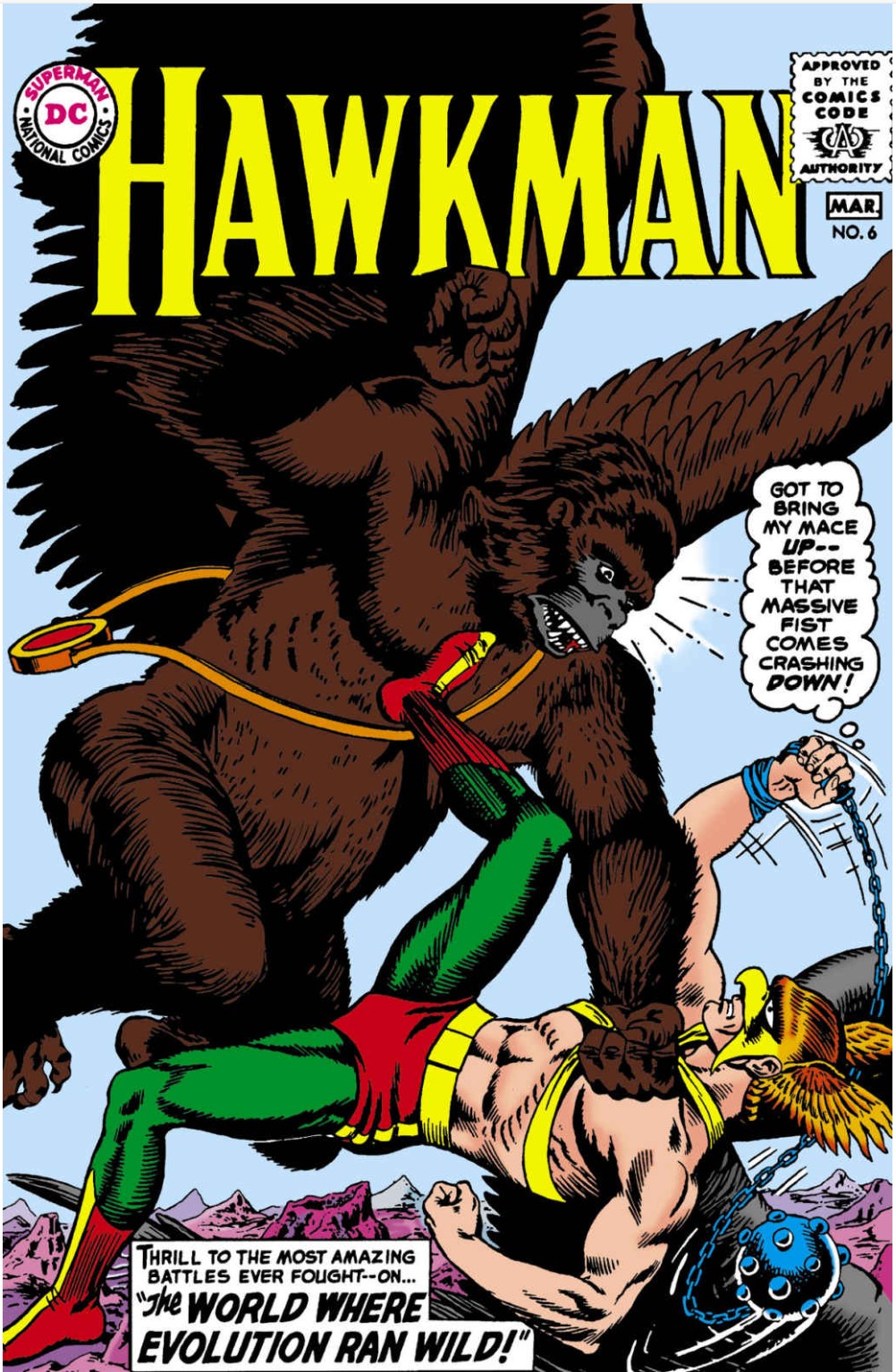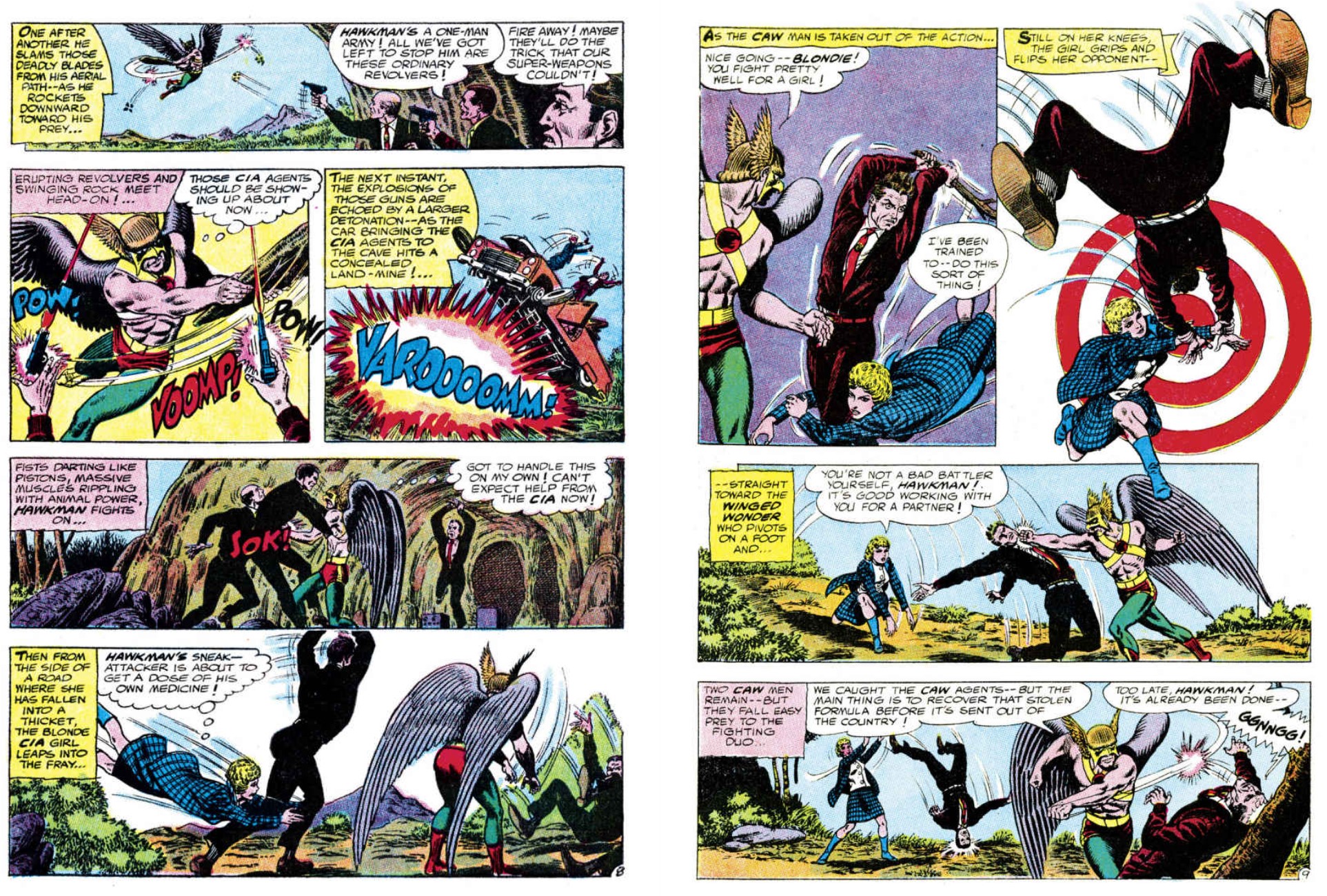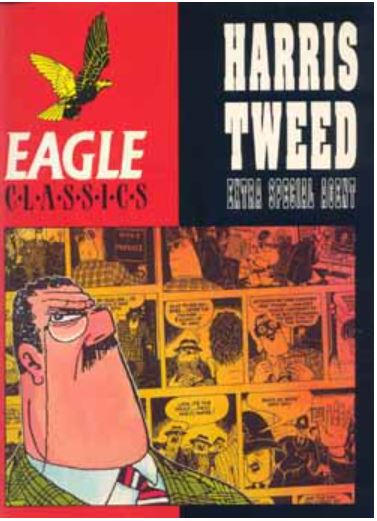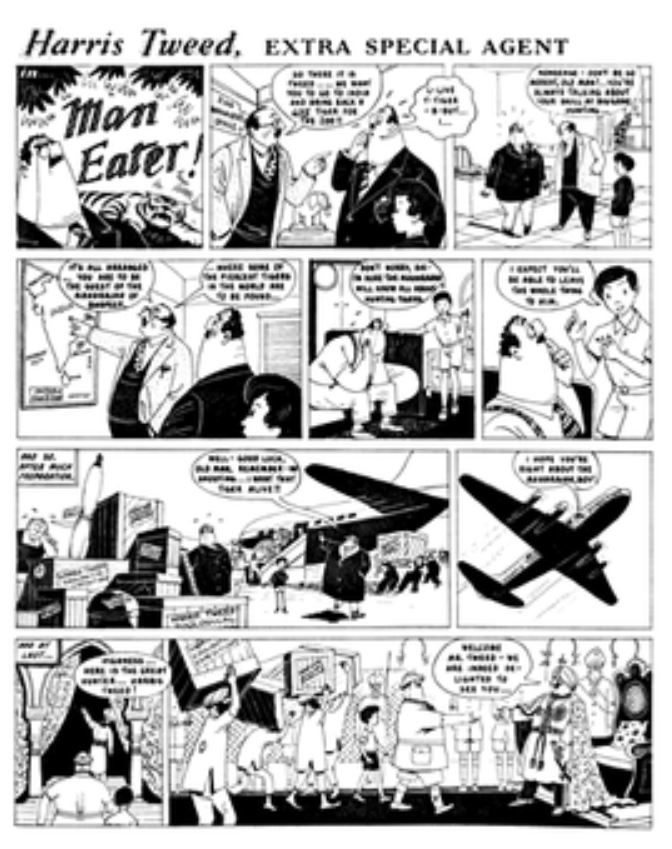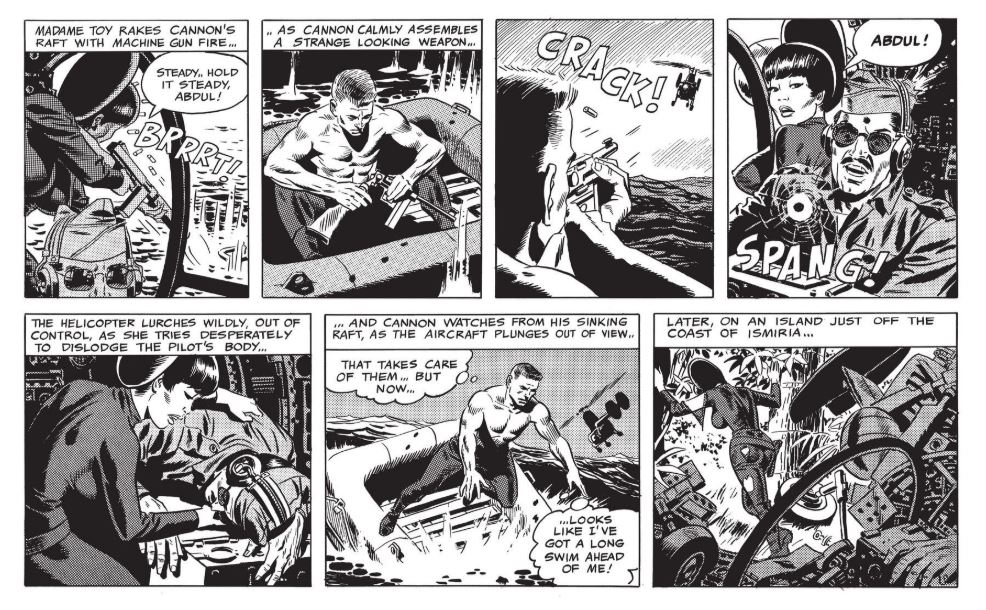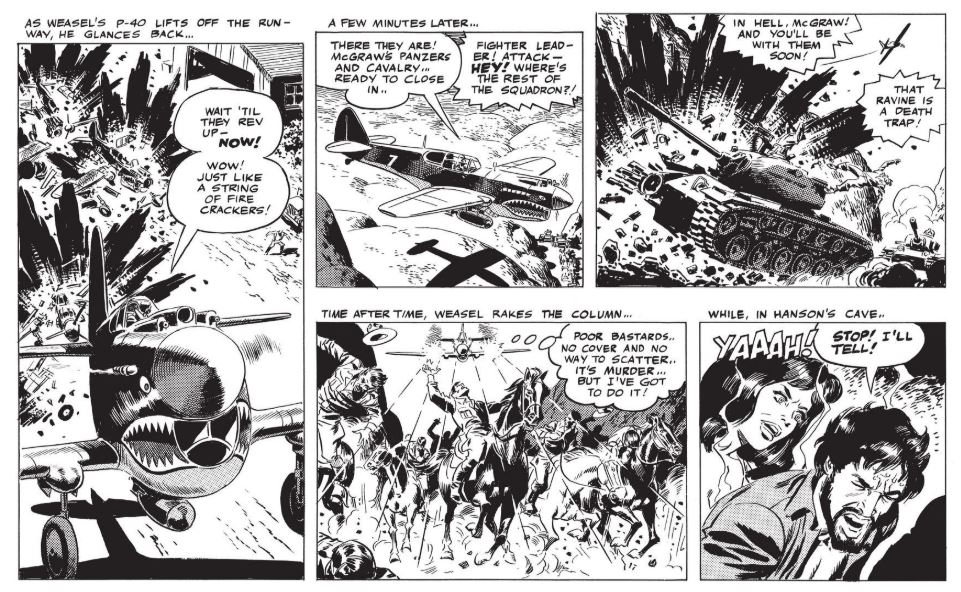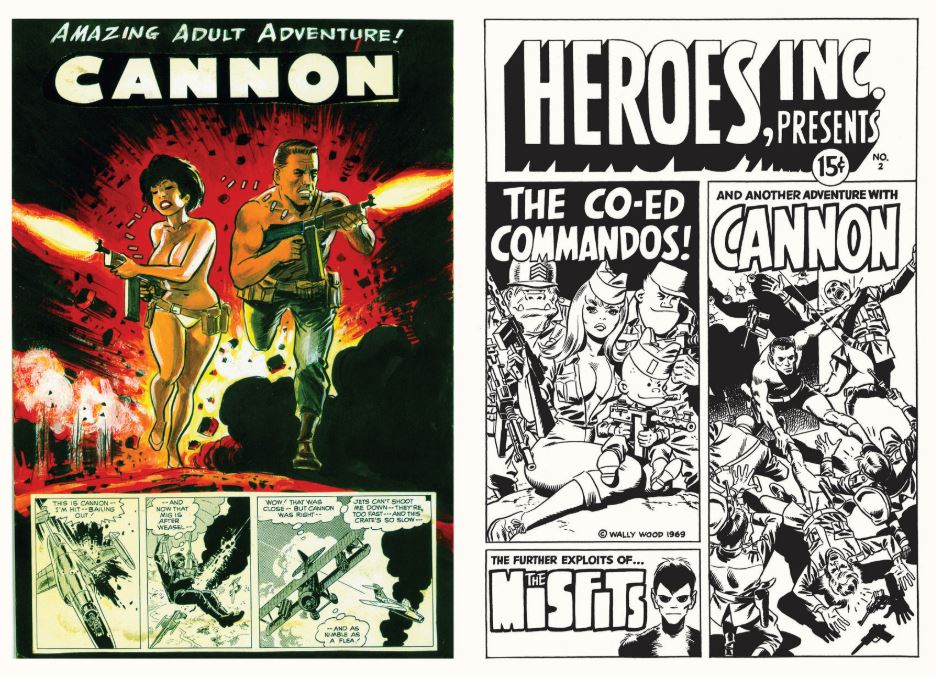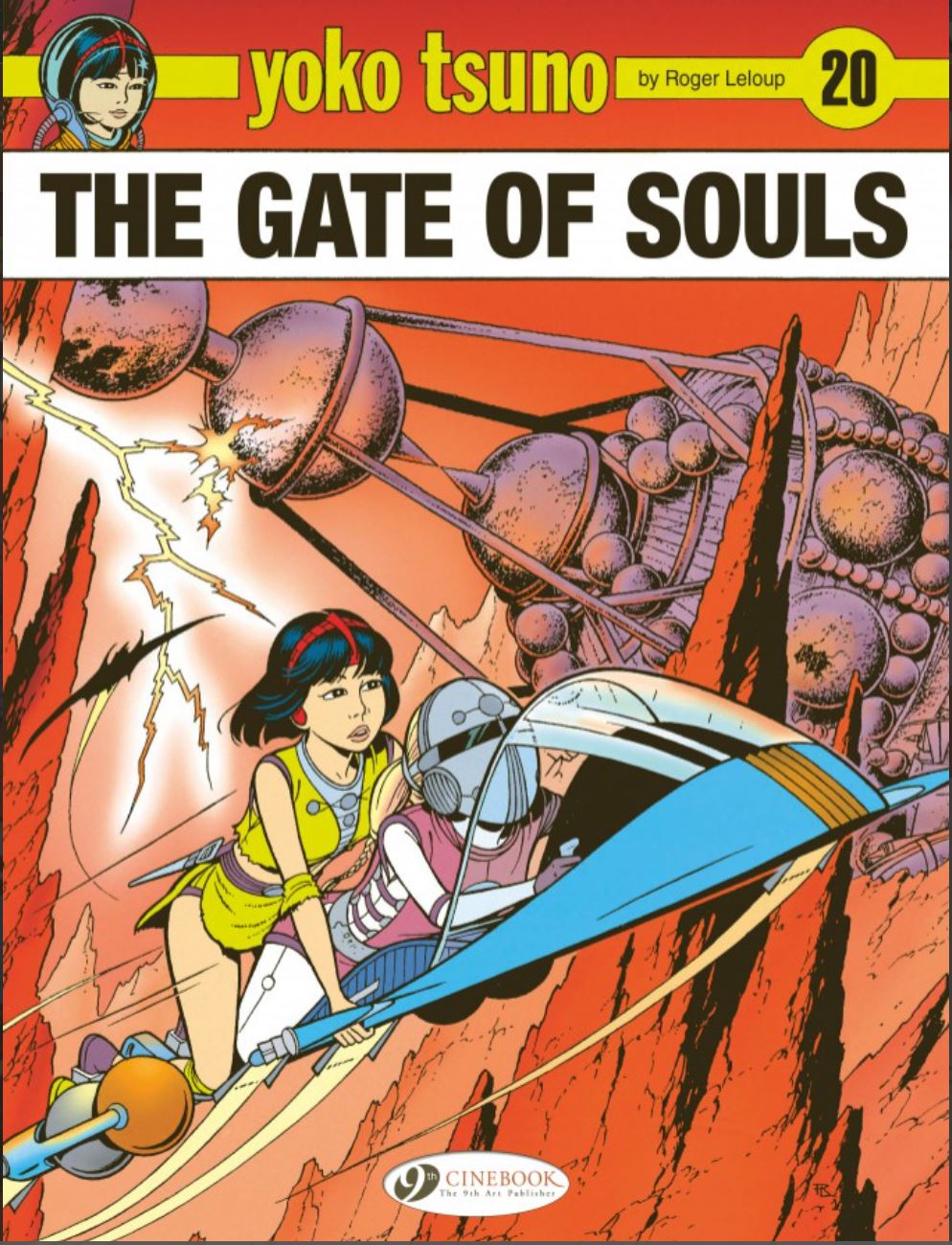
By Roger Leloup, coloured by Studio Leonardo & translated by Jerome Saincantin (Cinebook)
ISBN: 978-1-80044-160-6 (Album PB)
This book includes Discriminatory Content produced in less enlightened times.
On September 24th 1970, “electronics engineer” Yoko Tsuno first began her troubleshooting career as an indomitable intellectual adventurer. Bon anniversaire, ma brave cherie!
Her debut in Le Journal de Spirou was realised in “Marcinelle style” cartoonish 8 page short ‘Hold-up en hi-fi’ and although she is still delighting readers and making new fans to this day, for a while it looked as if she wasn’t going anywhere soon. Thankfully, her astonishing, astoundingly accessible exploits were revised and she quickly evolved into a paragon of peril: helming a highpoint of pseudo-realistic fantasies numbering amongst the most intoxicating, absorbing and broad-ranging comics thrillers ever created. Her globe-girdling mystery cases and space-&-time-spanning epics are the brainchild of Belgian maestro Roger Leloup who launched his own solo career in 1953 whilst working as studio assistant/technical artist on Hergé’s Adventures of Tintin.
Compellingly told, sublimely imaginative and – no matter how implausible the premise of an individual yarn – always firmly grounded in hyper-authentic settings underpinned by solidly-constructed, unshakably believable technology and unswerving scientific principles, Leloup’s illustrated escapades were at the vanguard of a wave of strips revolutionising European comics. Early in the journey, he switched from loose illustration to a mesmerising, nigh-photo realistic style that is a series signature. The long-overdue sea-change in gender roles and stereotyping he led heralded a torrent of clever, competent, brave and formidable women protagonists taking their rightful places as heroic ideals and not romantic lures. That consequently elevated Continental comics in the process. Such endeavours are as engaging and empowering now as they ever were, none more so than the travails of masterful Miss Tsuno.
Her first outings (oft-aforementioned, STILL unavailable Hold-up en hi-fi, and co-sequels La belle et la bête and Cap 351) were introductory vignettes prior to epic authenticity taking a firm grip in 1971 when the unflappable problem solver met valiant but lesser (male) pals Pol Paris and Vic Van Steen. Instantly hitting her stride in premier full-length saga Le trio de l’étrange (in LJdS’s May 13th edition), from then on, Yoko’s efforts encompassed explosive exploits in exotic corners of our world, spy and crime capers, time-travelling jaunts and sinister deep-space sagas such as this one. There are 31 European bande dessinée albums to date, with 21 translated into English thus far, albeit – and ironically – none of them available in digital formats…
Initially serialised in LJdS #3033 to 3044, spanning May 29th to 14th August 1996, La Porte des âmes became Europe’s 21st collected Yoko Tsuno album at year’s end. Following chronologically from The Astrologer of Bruges, it returns our terrestrial troubleshooters to their friends in the sky with another momentous visit with the prodigiously reconstructing Vineans.
In a disturbingly philosophical, metaphysically-tinged caper the Earthlings – including Yoko’s adopted daughter Morning Dew and Mieke (Pol’s fiancée from the 16th century) – all toil in deep space beside the disaster-prone lethally pragmatic alien colonists with their most trusted ally when another echo from the distant past changes lives and destines once again.
Their constant guide and companion is Khany: the competent, commanding single mother who combines parenting her toddler Poky and the humans with saving worlds, leading her people, averting continual cosmic catastrophe and – with Yoko – recovering lost knowledge. Frequently that stems from attempts to restore a moral compass to those ancient survivors ruthlessly rebuilding their fallen civilisation and permanently undermining and gaslighting the upstarts who slept out the apocalypse on another planet. Progress is slow and regularly results in uncovered, long forgotten threats that might end the racial resurrection in flaming instants…
In their initial adventure together, Yoko, Vic and Pol had discovered an enclave of dormant aliens hibernating for eons in Earth’s depths. After saving the sleepers from robotic/AI subjugation, the humans occasionally helped the refugees (who had fled their planet two million years previously) to rebuild their lost sciences. Ultimately, the humans accompanied the Vineans on their return to their natal star system and (wrongly presumed) long-dead homeworld. In the years Vineans slept, primary civilisation collapsed, and the world they strive to reclaim is much changed, with isolated pockets of inhabitants evolved beyond recognition. As the re-migrants gradually restore a decadent, much-debased civilisation and culture, the human trio become regular guests and helpers against sabotage, political intrigue and simple skulduggery…
And as seen here, it’s not just people they must beware of…
On a previous visit Yoko had established a unique psychic link with ancient mech-intellect Queen Hegora: one granting her certain technophilic abilities. A later excursion saw her bonded with an equally antediluvian child-rearing toy robot. “Myna” and her kind were constant sentient companions to young children – until parents abruptly deemed them all too smart and dangerous, before subsequently banishing them to distant asteroid. Now that last relic is hastily consulted as another time-lost probe soars back into Vinean territory from out of history and the (currently) unknown…
A constant cause of contemporary strife is piecemeal rediscovery of ancient beings who have endured due to the Vinean practise of digitally encoding living persons into automatons. Now a space salvage effort is interrupted by a probe from the deep past, and the excited explorers confront the possibility of being able to finally penetrate the fabled mysteries of occluded and forbidden lost colony Ultima. Their actions precipitate shocking and tragic discoveries which expose the downside of immortality.
Deadly strife begins as the discoverers plunge down to the revealed world and find another survivor outpost divided into factions indulging in an unending war of technologies and philosophies. An imminent crash and collision makes allies of advance scout Yoko and a bold indigenous pilot named Litsy, and soon the human learns that here vassals are forced to carry the personalities of other deceased servants. Servitude is eternal with useful, knowledgeable “souls” digitally impressed upon successive bodies. All the lower orders can anticipate is forced reincarnation and losing themselves bit by bit to someone else’s soul’s past history…
In a society where biology and mechanisms are less valuable than knowledge and experience, the newcomers are soon caught up in a devilish scheme challenging and undermining the very nature and fine print definition of life on Ultima, as they expose a long unfolding plot by rebel Isora who currently inhabits a menial flying droid. She illicitly made copies of her soul before committing suicide and now she ruthlessly seeks to recover and reunite her fractured personalities in a fresh – and stolen – body. This is over and despite violent objections of its original occupier Ethera, and once morally-outraged Yoko fully grasps the complexities of the situation she is prepared to do whatever is necessary to end this ghastly refinement of intellectual slavery…
Ultimately, overwhelming institutionalised digital malevolence proves inadequate in the face of Yoko Tsuno’s passionate humanity, bold imagination and quick thinking, but her success comes at great cost and cannot truly be called a triumph. Moreover, as the weary explorers return to established Vinean borders, Isora delivers a chilling message revealing nothing is settled yet…
Blending rocket-paced action with shattering suspense and byzantine twists, this deviously twisted, terrifying plausible battle with bigotry is superbly mesmerising, proving once more how smarts and combat savvy are pointless without compassion. As always, the most potent asset of this edgy outer space dramas is its astonishingly authentic setting, as ever benefitting from Leloup’s diligent research and meticulous attention to detail.
The Gate of Souls is a magnificently tense all-action psycho- thriller, taut and compelling, and surely appealing as much to fans of blockbuster space opera as ordinary general purpose comic addicts.
Original edition © Dupuis, 1996 by Roger Leloup. All rights reserved. English translation © 2025 Cinebook Ltd.
Today in 1972, talented wee nipper Jock was born. You can remind yourself how good an artist he is by looking at Green Arrow Year One – The Deluxe Edition.

